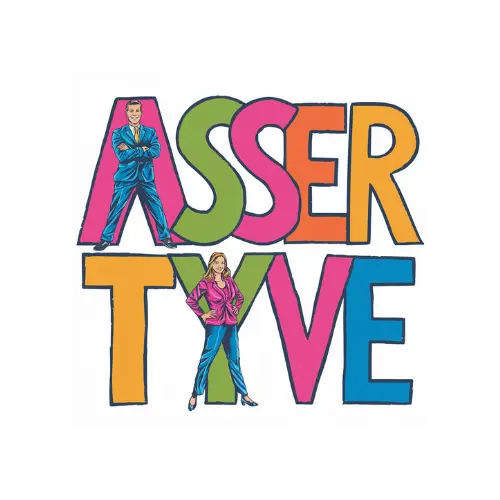Identifying Your Communication Style
Understanding your own communication style is crucial when it comes to effective interaction with others. Each person has a unique way of expressing themselves and conveying their thoughts and feelings. By recognizing your preferred style of communication, whether it be direct and assertive or more passive and indirect, you can better tailor your approach to different situations and individuals. Reflect on how you typically engage in conversations, resolve conflicts, and express your emotions to gain insight into your communication tendencies.
One way to identify your communication style is to pay attention to how you respond in various social settings. Notice if you tend to be more talkative or reserved, if you prioritize listening or speaking, and if you prefer to communicate through verbal or nonverbal cues. Additionally, consider seeking feedback from those close to you about how they perceive your communication style. Self-awareness is key in developing effective communication skills, as it allows you to play to your strengths and work on areas that may need improvement.
Understanding Nonverbal Communication
Nonverbal communication plays a significant role in our daily interactions, often conveying messages more powerfully than words alone. From facial expressions and body language to gestures and tone of voice, nonverbal cues provide valuable insights into a person’s emotions, intentions, and attitudes. It is essential to be attentive to these subtle signals to better understand others and respond effectively in various social situations.
Moreover, mastering the art of nonverbal communication can enhance your own ability to express yourself more authentically and confidently. By becoming more aware of your own body language and vocal cues, you can align your verbal and nonverbal messages, creating a more coherent and compelling communication style. Developing a keen sensitivity to nonverbal cues can help you build stronger connections with others, foster empathy, and navigate social interactions with greater ease and understanding.
Active Listening Techniques
Active listening is a crucial skill in effective communication. It involves fully concentrating on what the speaker is saying, rather than formulating your response while they are talking. This means giving your complete attention to the speaker, maintaining eye contact, and nodding to show that you are engaged in the conversation.
Another key aspect of active listening is paraphrasing what the speaker has said to ensure that you have understood their message correctly. Reflecting back their words not only demonstrates that you are listening attentively but also helps to clarify any potential misunderstandings. By practicing active listening techniques, you can enhance your relationships, improve your communication skills, and foster a deeper level of understanding with others.
Setting Boundaries in Communication
Setting clear boundaries in communication is essential for maintaining healthy relationships and fostering mutual respect. By clearly expressing your needs and limitations, you establish a framework that promotes effective and respectful interactions. Boundaries not only protect your well-being but also contribute to creating a sense of safety and trust in relationships.
It is important to communicate boundaries assertively yet tactfully, ensuring that your message is understood without causing unnecessary conflict. Honoring your own boundaries sets a positive example for others to follow, ultimately leading to improved communication dynamics and a more harmonious exchange of thoughts and feelings.
Expressing Yourself Clearly and Confidently
To express yourself clearly and confidently, it is essential to use language that is direct and concise. Avoid beating around the bush or using vague statements that may lead to misunderstanding. Be assertive in your communication, stating your thoughts and feelings with confidence.
Additionally, pay attention to your body language and voice tone when expressing yourself. Maintain eye contact, stand or sit up straight, and speak in a clear and audible voice. Nonverbal cues can enhance your message and convey confidence to the person you are speaking to.
Handling Difficult Conversations
Difficult conversations are a natural part of human interaction, but they can often be challenging to navigate. When faced with a tough dialogue, it is crucial to approach the situation with an open mind and a willingness to listen. Avoiding defensiveness and staying calm can help create a safe space for both parties to express their thoughts and feelings honestly.
It can be helpful to focus on the specific issue at hand and avoid bringing up unrelated topics that may escalate the conversation. Acknowledging the other person’s perspective and showing empathy towards their feelings can go a long way in finding common ground and working towards a resolution. Remember, difficult conversations are an opportunity for growth and understanding, so approach them with patience and respect.
Developing Empathy in Communication
Empathy is a key component of effective communication. It involves the ability to understand and share the feelings of another person. Developing empathy requires actively listening to others without judgment and putting yourself in their shoes. When you empathize with someone, you are better able to connect with them on a deeper level and respond in a way that shows you understand and care about their perspective.
Incorporating empathy into your communication can help build trust, strengthen relationships, and resolve conflicts more effectively. By showing genuine concern for others and acknowledging their emotions, you create a safe space for open and honest dialogue. Empathy also allows you to perceive nonverbal cues and subtle emotions, leading to a more nuanced understanding of the people you interact with.
Building Trust in Relationships
Trust is a fundamental aspect in any healthy relationship. It is built upon a foundation of honesty, reliability, and consistency. When we are open and transparent with others, it fosters trust and strengthens the bond between individuals. Trust is a two-way street, requiring both parties to be trustworthy and to trust each other in return.
To build trust in relationships, it is essential to follow through on commitments and be dependable. Consistency in actions and behaviors over time establishes credibility and reliability. Additionally, actively listening and showing empathy towards others can help create a safe and understanding environment, further solidifying trust. In essence, building trust is a continuous process that requires effort, communication, and a genuine desire to connect authentically with others.
Resolving Conflict Effectively
Conflicts are a natural part of any relationship, be it personal or professional. When disagreements arise, it’s crucial to address them effectively to prevent further escalation. One key aspect of resolving conflict is to actively listen to the other person’s perspective without interrupting or getting defensive. By showing empathy and understanding their point of view, you can create a space for open communication and mutual respect.
In addition to active listening, it’s important to focus on finding common ground and seeking solutions that are mutually beneficial. Avoid approaching conflicts with a win-lose mentality, as this often leads to resentment and further issues down the line. Instead, aim to collaborate and brainstorm possible resolutions together, keeping the ultimate goal of maintaining a healthy relationship in mind. By approaching conflicts with a positive and solution-oriented mindset, you can foster stronger connections and navigate challenges effectively.
Practicing Assertiveness in Daily Interactions
Assertiveness in daily interactions is essential for effective communication. It involves expressing your thoughts and feelings in a confident and respectful manner. By asserting yourself, you can clearly communicate your needs and boundaries, while also considering the needs of others.
When practicing assertiveness, it is important to use “I” statements to express your thoughts and feelings, rather than placing blame or making accusatory statements. This helps to avoid conflict and promotes a more open and constructive dialogue. Remember, being assertive is not about being aggressive or dominating the conversation, but rather about standing up for yourself and expressing your opinions in a calm and assertive manner.
• Using “I” statements to express thoughts and feelings
• Avoiding blame or accusatory statements
• Promoting open and constructive dialogue
• Standing up for yourself in a calm and assertive manner
How can I identify my communication style?
You can identify your communication style by reflecting on how you typically interact with others – do you tend to be passive, aggressive, or assertive in your communication approach?
What are some active listening techniques I can use in daily interactions?
Active listening techniques include making eye contact, nodding to show understanding, paraphrasing what the other person has said, and asking clarifying questions.
How can I set boundaries in communication?
Setting boundaries in communication involves being clear about your needs and expectations, saying no when necessary, and communicating your boundaries assertively.
How can I handle difficult conversations effectively?
Handling difficult conversations effectively involves staying calm, actively listening to the other person’s perspective, expressing your own thoughts and feelings clearly, and seeking a resolution that is mutually beneficial.
What is empathy and how can I develop it in my communication?
Empathy is the ability to understand and share the feelings of others. You can develop empathy in your communication by actively listening, showing empathy through your body language, and practicing perspective-taking.
How can I build trust in my relationships through communication?
Building trust in relationships involves being honest and transparent in your communication, following through on your commitments, and demonstrating empathy and understanding towards others.
How can I resolve conflicts effectively through assertive communication?
Resolving conflicts effectively through assertive communication involves expressing your needs and concerns clearly, actively listening to the other person’s perspective, seeking compromise, and working towards a solution that benefits both parties.







Leave a Reply